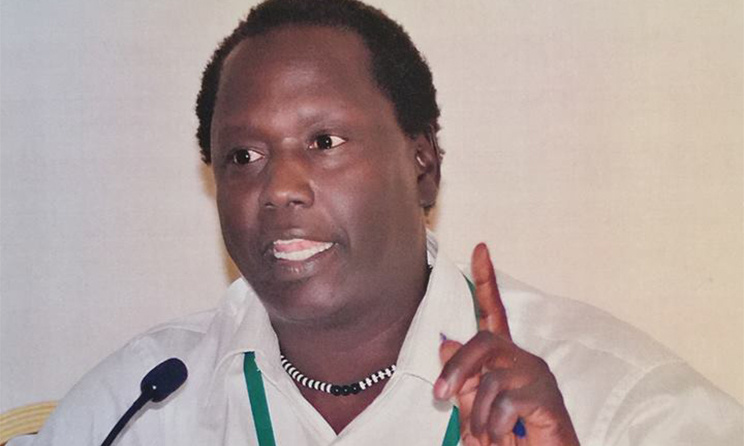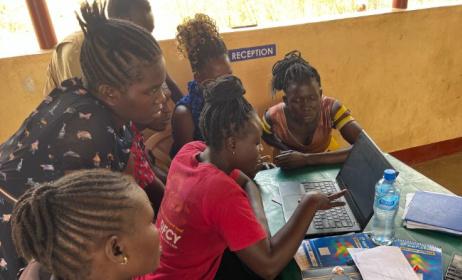Preserving musical heritage in South Sudan
South Sudan is considered as one of the most diverse and culturally rich countries in the world. More than 64 indigenous languages are spoken in the country and this has resulted in different traditions and cultural practices.
 Sudd Institute co-founder and former undersecretary of culture in South Sudan Jok Madut Jok. Photo: Facebook
Sudd Institute co-founder and former undersecretary of culture in South Sudan Jok Madut Jok. Photo: Facebook
Before South Sudan declared independence from Sudan in 2011, Southerners, who were treated as religious and ethnic minorities, had accused the Sudanese government of denying them political power and economic support.
Independence and cultural heritage of South Sudan
More than a year after independence, the then undersecretary of culture, Jok Madut Jok, was tasked with unifying a diverse population – estimated at 10.5 million people – living in one of the world’s least developed countries defined by decades of war.
In September 2012, a three-day workshop was held in Juba. It was led by the Ministry of Culture in partnership with the UN Educational, Scientific and Cultural Organisation (UNESCO) and the African World Heritage Fund. Its aim was building capacity to preserve the country's rich cultural heritage, as well as historic and natural sites.
The Institute of African and Asian Studies (IAAS) at the University of Khartoum then finalised a project aimed at safeguarding audio-visual materials of traditional Sudanese music housed in the Folklore and Traditional Music Archives at the University of Khartoum. The university, which was inaugurated in 1902, holds musical works and folklore from different parts of Sudan. It also boasts a digital library. An action plan for the management and preservation of the archives was set up, with financial support of about $12 000 coming from the Intangible Cultural Heritage Fund.
In South Sudan, a museum and theatre were also proposed and the Ministry of Culture set aside a plot of land for the complex in Juba. Thousands of historic documents, which had been rotting in basements across Juba, were moved into a large tent. To populate the museum, UNESCO teams went from village to village, collecting musical instruments, weapons and beaded jewellery. Then, in each region, they held festivals where neighbouring tribes were invited to learn about each other. According to UNESCO culture specialist Ellen Lekka, the project was a success.
In addition to the national archives, UNESCO instated a project called Travelling Exhibition between 2013 and 2014. Communities in three states – Eastern Equatorial, Western Bahr el Ghazal and Western Equatorial – were visited during the project and music recordings were made in addition to the collection and archiving of objects, folklore, traditional crafts and dance styles.
The state of digital and physical archives
According to the UNESCO project, the Folklore and Traditional Music Archives in Khartoum comprises a valuable collection containing more than 3 000 audio recordings of traditional Sudanese music and photographs collected since 1963 as a result of various research initiatives.
In 2013, Sudan Radio and TV had extensive archives of audio tapes as well as video tapes of TV programmes and documentaries. These included 160 000 hours of radio tapes that were cleaned, conserved and digitised. About 27 000 hours of audio was converted. Sudan TV also had 60 000 TV tapes in a range of formats but none of them were converted.
Also, on the same grounds where the buildings of Sudan Radio and TV are located, there was a cinema archive of 7 000 documentary films considered of huge importance to Sudanese history and culture since independence. These were reported to be in a dilapidated state.
Challenges to perservation of cultural heritage
In December 2013, a power struggle erupted between President Salva Kiir of the dominant Dinka tribe and then vice-president Riek Machar who is a member the smaller Nuer tribe. Soldiers moved across the capital, Juba, executing civilians. The ensuing civil war pitted the Dinka against the Nuer.
At the time, the construction of the new museum had not begun and the artefacts collected for the facility were sent to the Nile River Museum in Egypt for safekeeping. Other documents were stored in a rented house. After a promising ceasefire in 2015, South Sudan began picking up the pieces of its unfinished cultural projects. But in July 2016, Kiir and Machar, backed by their loyal troops, resumed their power tussle. For weeks, soldiers in Juba killed and raped while targeting minority tribes, foreign aid workers and local journalists. UNESCO South Sudan director Salah Khaled was shot several times and eventually left the country. Nearly 200 000 people followed suit. As the world celebrated World Refugee Day on 20 June 2016, it was reported that more than 3 million people, or a third of the South Sudanese population, had fled their homes. This was Africa's biggest refugee crisis since the Rwandan genocide.
The culture programme head at UNESCO Juba, Anna Rowett, says their work on the national archives contains no music. Some music instruments were collected by Ellen Lekka under the Travelling Exhibition programme and are now on display in Egypt, but there is nothing notable collected by UNESCO in Juba. This is due to a number of challenges that include lack of government funding and donors favouring humanitarian priorities above responding to the cultural needs of the country. There is also a need for capacity-building to create improved mechanisms for data acquisition, digitisation, storage, retrieval and implementing various measures to ensure the security and safety of the archives.
Growing interest and policy formulation
War, famine, displacement and lack of funds means that the cultural heritage of South Sudan is under severe threat. However, there is growing interest in its preservation despite the many challenges. A draft culture policy is still being developed and the Ministry of Culture is supportive of its creation. The ministry has a consultant working on this policy while UNESCO plays an advisory role towards its development.
References:
- http://news.nationalgeographic.com/2016/11/south-sudan-archives/
- https://www.voanews.com/a/south-sudan-preserves-historical-cultural-sites/1502389.html
- https://ich.unesco.org/en/news/digitization-of-sudan-folklore-and-traditional-music-archives-00046
- http://simon-tanner.blogspot.ug/2013/07/digital-sudan-cultural-heritage-revived.html
- http://www.dailymail.co.uk/wires/ap/article-3680358/Official-5-soldiers-killed-shooting-S-Sudan-capital.html
- http://www.ibtimes.co.uk/world-refugee-day-2017-crisis-south-sudan-worlds-fastest-growing-refugee-emergency-1626941
- http://www.reuters.com/article/us-southsudan-history-idUSBRE84N0OC20120524
This article is part of the Music In Africa Connects project, a multi-faceted development initiative aiming to support the music sectors of African countries affected by conflict. To find out more about Music In Africa Connects, click here.



























Comments
Log in or register to post comments